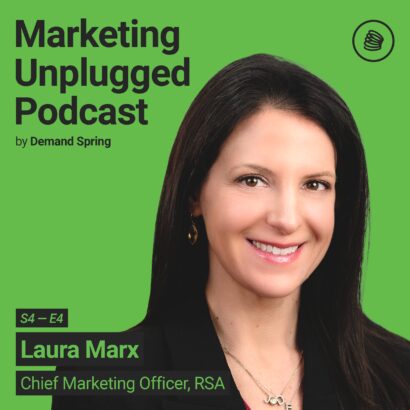A couple of weeks ago I attended Adobe Summit for the first time. I attended this impressive gathering of marketers because the company recently acquired Marketo –a long-time partner of Demand Spring. It gave me a great opportunity to reflect on how far Marketing Automation has come in the 15 years I have been using it, and where it’s likely to go in the next 15 years.
Blast from the Past
The year was 2005. Britney Spears won a Grammy for Best Dance Record. The Patriots won the Super Bowl (yes!). And a young Harvard student named Mark Zuckerberg had just changed the name of his web site, thefacebook.com, to “Facebook.” I was a Global Demand Center leader at the market-leading analytics company, Cognos, which would soon become IBM’s biggest acquisition –a claim to fame it held until IBM’s 2018 purchase of Red Hat.
At Cognos, our marketing organization was ahead of its time in many respects. We became the first million-dollar client for a young company named Eloqua. We were also the biggest client for another young company called Salesforce. We did some pretty cool things, growing our marketing-driven pipeline contribution from 0 to 30% within two years. By 2007, we had 1,400 inbound-triggered nurture streams in place. We won Eloqua’s first Markie award for lead management and SiriusDecisions Return on Integration award the following year.
From Eloqua to Marketo
Fast forward to 2012. I made the bold, naïve, crazy decision to start my own company, Demand Spring. Emboldened by a vision that we could help other B2B companies do what we had done at Cognos, I knew that the global demand center, that can sometimes lay dormant in clients, could be awakened by the right combination of strategy, content, and technology.
My first inclination was to turn to Eloqua as our Marketing Automation partner. I had always been impressed by Eloqua’s culture and customer-centric marketing. They had been early leaders in content marketing, led by Joe Chernov and Jesse Noyes. Who remembers the Grande Guides?
But then Oracle purchased Eloqua, and the leadership team and many key employees left almost immediately, taking with them the unique corporate culture…and my connections.
At that time, a young purple company called Marketo was starting to make some noise. Led by Phil Fernandez and Jon Miller, it had a spirit and customer-centricity that reminded me of Eloqua. The rest is history. Today, Demand Spring has implemented, optimized, and run Marketo for many of its clients, building an amazing team of Marketo experts and continuously strengthening our relationship with the nice people in purple (and now Adobe red).
Marketing Automation Today
There are some decisions you look back on and really regret. What was I thinking with that teal suit I owned in my 20s? Why did I start cheering for the Cleveland Browns many moons ago? (I switched to the Pats after too many years of misery.) And why didn’t I buy Netflix stock when it was $30?
But I have never regretted our partnership with Marketo. Marketo has stood the test of time over the past seven years, becoming a leader in B2B Marketing Automation. Its platform has always been a great complement to the modern marketing (an Eloquaism) strategies Demand Spring has enabled for so many companies.
More than any other B2B Marketing Automation platform, Marketo grasps what it means to be in the cloud. It’s about an open ecosystem. Launchpoint is by far the most robust gathering of MarTech, AdTech, and SalesTech partners of any player in this space. This breadth means that Launchpoint users can easily take advantage of some of the world’s best applications and platforms to extend and enhance the customer experience.
Together, Demand Spring and Marketo have helped many frustrated clients migrate from other MA platforms. The source of their frustration? Usually one or a combo of poor CRM integration, marketing “Manualization” processes, inadequate analytics, limited innovation, or a lack of connectors to other applications. Switching to Marketo transforms clients’ relationship with sales, enables them to engage in an automated way throughout the customer journey, and more accurately measure and optimize their marketing investments. It’s really about delivering on the full promise of marketing automation today.
The Next 15 Years
But what about the promise of marketing automation over the next 15 years? What might that look like? I don’t have a crystal ball, but I do have a few educated guesses:
Will Marketing Automation even exist in 15 years?
My bet is yes, but automation will happen on an entirely new level. Artificial Intelligence is best at learning from, enhancing, and automating repetitive tasks. This skill set makes it a good match for Marketing Automation. It seems likely that Marketing Automation will be AI-driven in the future, with AI creating “Smart Campaigns” and using machine learning to optimize content and engagement paths. MA functionality will likely operate like a platform, orchestrating cross-channel experiences much more seamlessly than individual applications do today.
What changes will bots and AI bring?
Within the next 15 years, bots will probably perform a lot of the evaluation in a B2B buyer journey. They can continually learn an organization’s business and technical requirements and identify solutions that fit the buying criteria. So, AI-powered MAP solutions will deliver algorithm-optimized content to other bots.
How will human marketers work?
Many “future of work” experts believe that AI and bots won’t necessarily replace people, but rather will replace the repetitive tasks to which humans are actually less suited (and more error prone) than bots. In other words, bots will help us focus on the things humans do best – planning, analysis, collaboration, and engagement. Human marketers will remain critical for building and maintaining the MAP ecosystem. Data analysts will remain essential. And content developers (writers, video producers) will continue to be critical in driving creativity and engagement.
Who will be the leaders in Marketing Automation in 15 years?
The easy answers are ‘the market is ripe for disruption’ and ‘the technology leaders of the future probably don’t even exist yet’. But the truth is, when we look at other platform categories today, such as ERP (SAP, Oracle) and CRM (Salesforce), the leaders have been in place for well over 15 years. Adobe’s vision for a platform based around cross-capabilities (Adobe Experience Platform) seems well-suited to driving sustainable innovation in the MA space.
Looking Forward
Those are some of my educated predictions. But whatever emerges in the next few decades, I’m certain of two things. The first is that we’ll enjoy watching exciting new trends and capabilities nobody could have predicted.
The second?
Teal suits are never gonna make a comeback.
Schedule a Marketo Discovery Call





